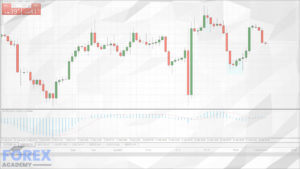Hello, and welcome to this latest edition of courses on demand brought to you by Forex dot Academy. In this course, we will be discussing an introduction to Fibonacci. There is, of course, in risk when trading in the financial market. So, just before, we do begin please take a moment to familiarise yourself with the following disclaimer.
So, in this lesson, what, we hope to cover is really develop a basis with the introduction to Fibonacci. What is it all about and how do, we use it? As a technical indicator, we’ll discuss its mathematical significance, and it does actually have some significance in many walks of life in nature. We will discuss it as a technical indicator in relation to its support and resistance. So, that is really what It does. It looks for these areas within the market that, we look for trading opportunities, on congestion of price action around levels of support, and resistance. We will be really discussing how to use it as an indicator. Looking at these Fibonacci levels how to use it from high to low in the markets, and how significant. It can be, as a technical influence on our trading, and then we’ll be discussing some of the limitations obviously, as a technical indicator many other technical indicators. As technical analysts, we know and accept that they have various limitations. We’ll discuss the limitations of Fibonacci retracements themselves. So, let’s delve into our introduction to Fibonacci retracement levels, and these levels are very important to technical traders, as the highlight long-term support, and resistance levels that often identify potential market reversals. It is perhaps one of the most commonly used techniques that indicators, and us such generates additional interest when the market rates in, and around these levels okay. So, as technical traders, we are aware of these levels within the market, and that actually generates an additional level of interest, and is often a self-fulfilling prophecy, as price movement tends to react quite volatile and shift away from such levels. As an indicator, it is more applicable to trading longer time frames and is not suitable for trading shorter time frame analysis, for example, five-minute price action charting. Okay, however, given its objective in identifying potential reversal signals. It does work much better in markets that experience long-term volatility, and continued price change, and we will discuss this in much more detail throughout the webinar.
It is much more applicable for those markets that experienced volatility obviously, if we’re looking to trade off levels were, we see market pullbacks, we see levels of contraction, and potentially look to buy from those areas, if it’s selling off in that direction that fall eternity will actually give us opportunity with our Fibonacci retracement levels. So, these Fibonacci retracement levels, they alert traders to possible support and resistance areas in the market. A possible reversal is based on the prior move.
Okay, so, we’re looking potentially for market pullback to reverse, and the trading decision a bounce is expected to retrace a portion of the prior decline while a correction is expected to retrace a portion of the prior advance when a market pullback occurs technical traders identify a retracement levels for monitoring okay, and because, as I said, they are a self-fulfilling prophecy many traders are speculating in, and around these areas, we know how they’re going to react let’s say potentially the market is trading at all-time highs, and it pulls back to a 50 percent a level of retracement, we know that is very significant, and an area, where many traders are indeed monitoring the Fibonacci retracement has of course mathematical significance. It derives its values from a series of numbers these numbers were developed by Italian mathematician Leonardo of Pisa they’re in 1175 to 1250. So, those are the Fibonacci numbers they’re ranging from 1 to 144, and of course, they continue in the Fibonacci sequence, they are very significant, and, we often see them in many natural Universal proportions both mathematicians, and scientists conclude that their significance you can see them, and, as you look at the image there to the left resembles almost a share like, and make sure that you see on a beach with the formation of the swirl the Fibonacci swirl very famous indeed, they are important to us, as traders, as, they can identify these possible levels in the market support or resistance traders often trade these levels or look for breaker, and opportunities. So, when, we see them bounce from, as support to resistance within a level, they can often range, and that can cause range buying opportunities for a long consistent period of time or perhaps when these eventually break down, we can look for these breakout opportunities there is an acknowledgement of such levels often because trading congestion that leads to I suppose a lot of interest within the markets at these key for Fibonacci levels that’s generally what we’ll see there are a lot of speculative traders looking to trade these levels, and, as prices congest down to these levels that’s why you often see a breakouts after a mature trading trend almost expires from the level you can see a quick shift a quick burst of a volume in, and around these levels.
So, they’re technically very significant. Let’s discuss our Fibonacci levels, as technical support, and resistance for a moment in identifying in January levels of support, and resistance this obviously helps traders to discover both floors, and ceilings in the market okay. So, these prices are often supported by floors unresisted by the ceilings just like our house there, we have an image of the house, where the floor is actually supporting I say your body weight, and everything in the house on the ceiling would be resisting anything from the outside have perhaps weather or rain anything like that a downward pressure on the house itself these levels are particularly important over long periods of time, they are never a sure signal just like many other technical indicators prices often breakthrough such levels with strength, and, we see that, as a breaker, and, where exactly this is the common question, we get asked, as trading educators, where exactly should support, and resistance levels be pray be placed in the markets. So, here, we have a gold market, and, we can observe just technically, where you see our technical levels of support, and resistance, and it’s really not too difficult a question to ask why do, we choose these levels of support or resistance well, as, we look at the gold market we’re looking at the daily comments like structure albeit it’s over a long period of time, we can see that there are very significant areas or inflection points within these markets, we can see, we have a long-time high in, and around, and when, we have our level of support one-three-five-six, and of course, we have some very strong bounces from such an area. So, what I’d like to do is actually highlight some of these areas within the market here these areas, of course, I’m going hole we’re back to 2014 it’s technically significant for us. It is a long-time high in regards to the last three years of price action, and obviously the market has concluded that, It cannot break these highs for a long period of time that would lead us to believe that this level of support or resistance either one-three-five-six level is technically significant but, we can see throughout that there are some very important price inflection points here would be another level where we can see yes the market traded down all but a few times but. It punched quite strongly from these levels did break it on several occasions, but you can see over the long term. It does provide some real technical support, and, we get some very consistent bounces from the area these areas can convey an or these bounces can actually only last for a I suppose a short period of time, as, we see our next level of support holds up quite well over many significant areas within the market.
So, these are genuine levels of support, and resistance over the long term in the markets that seem to hold up, and quite well how does this relate in terms of ahead establishing the Fibonacci retracements well that is the real focus of Fibonacci retracement. It is to look for further levels of technical support, and resistance that can give you more evidence to actually look a tradeoff these areas or levels. So, as I move across to in the price chart here this is the dollar-yen daily chart the question I would like to pose for technical traders is how do we identify genuine levels of support, and resistance within the markets well let’s try, and look at, and just visibly see for a moon, if, we can see some highs, and lows over the price action that can give us our own identifiable levels of support of resistance obviously in observing these price action charts, we can see initially that some will be more significant than others. So, here, we have three very strong structured highs, and lows within the markets and they’re providing some technical support, and within this technical support, we have about a few various branches that are providing perhaps some shorter time levels of support and resistance. So, just by observing the price section chart what, we can do is look at these previous highs, and lows existing in the markets to give some technical at January levels of support, and resistance let’s look at identifying this technical support, and resistance areas over asset classes here on what, we have in front of us is the German DAX it’s an equity index in Europe, and, we have daily price action from left to right, we can see already, we have placed an overlay of some genuine levels of support, and resistance again they’re based on previous highs, and lows which give us a very strong inflection points within the markets what, we can see here is that we have a ceiling that is actually providing resistance over a sustained period of time, and, as the market trades up through, and breaks that level that ceiling then becomes a floor in the market. So, it’s very important to note that, as, we trade the markets can break through these levels, and obviously once the breakout occurs that previous level of support and resistance has actually faltered, and can actually change or shift to become a new level of support or resistance in the market
That again provides us with trading opportunity, as, we look to more relative price action we’ve seen a very strong break to the downside in this German DAX market, and that breakout opportunity has moved quite swiftly in terms of the price, and that’s generally what can occur in these markets we’ve seen the floor here. It provided support over a sustained period of time the market, and trade up to new high reverted from new highs, and with that weakness looking at the Japanese the structure of that Japanese candlestick, we see a very strong consistent breakthrough to the downside over of our new floor here, we have the gold market in front of us again, if, we look at the price section its daily candlesticks, and moving from left to right over a long consistent period of time what, we can see is a technical overlay is actually a Fibonacci retracement, and it is extending from a recent high to low point. So, that’s how we actually use these Fibonacci indicators, we look for a recent a real high or low point or a high to low, and actually stretch the indicator from those areas that stretch across our Fibonacci retracement levels of support, and resistance. So, it creates these retracement support levels, as a function of the Fibonacci numbers, as a technical indicator. It works better for particular asset classes, and, we will discuss that again in more detail, and the question I would like to pose is what happens next, we can see the blue circle indicating almost relative price action, and it is our 23.6 Fibonacci retracement level well what happens next, we know that there could be a significant move from this level, we could see a points up to new highs again or, we could see the price break down I have from our Fibonacci retracement level right the whole way down to 38.2 potentially lower over 50% retracement level. So, let’s branch across to a different asset class here in front, we have the US dollars are, and the question again I would like to pose here, where exactly do, we place the Fibonacci retracement indicator, if, we remember back to the previous slide we’re looking for a high, and low within this market something that can give us a real genuine insight, as to, where the Fibonacci numbers may be significant we’re not looking to perhaps pick a high, and a low from the past week we’re looking for an overall a genuine level of reflection over that consistent period of trading looking at these daily candlesticks high, and low that can give us a subjective level to, where the indicator is more observable. So, here, as, we input our indicator ins in the market, we can see the most recent long term high in the most recent long term lows are the most significant areas in which to place this Fibonacci indicator. So, let’s delve into the actual study of Fibonacci retracement, as a technical indicator in terms of what it means for our trading notice that I’ve used this market before quite a few times the gold market because gold is quite significant in terms of technically adhering to the Fibonacci retracement level, and again I wanted to use this because it is a good example, to use the indicator, and actually applying it to the markets. Notice in this chart, now, that I have my Fibonacci level, as the second most recent high there, and I want to really give you this, as an indicator in terms of high price section moves, as, we look to trade.
So, let’s just say for example, we begin trading where, we have our begin trading point marked how could, we look to perhaps trade this in terms of looking for levels of support, and resistance, and pullbacks within the market, and actually looking to trade, and corrections or our bounces from such levels will be, we have here our green circles here which actually give us very good strong signals to trade this market, we can look to buy or sell, as the market trades up or down between our indicator levels. So, very good term structures indeed but notice again that, we have some areas, where the signal actually is a pure signal on. It actually gives us some losing trades, if, we decided how it decided to take these trading positions on. So, there is a level of inconsistency with the indicator itself and, if we hadn’t started other begin trading signal there, we would have made have various good trades, and a few bad trades, as well. So, there is that level of inconsistency again, as, we approach our most recent price action the question is often well what happens here what’s going to happen next, and all, we can do is observe the price actually ask technical traders looking for closing perhaps the structure of the Japanese candlesticks – – perhaps volume, and momentum shifts to see, if we can get more of a signal that this market will actually bounce from this level or break through it, we know that it’s technically significant and that many other traders are focusing on monitoring their technical trading decisions around this retracement level. It is the awareness of these Fibonacci levels therefore that the markets often focus their attention on this can then become a self-fulfilling prophecy, as traders observe price action around these levels, and that leads us nicely on them to discussing the limitations of Fibonacci retracement, as a technical indicator the underlying principle of any Fibonacci tool is only a numeric anomaly and is not grounded in any logical proof, and that is a very important point to make there, guys. Okay, just like any other indicator of the Fibonacci retracement is not a standalone signal that, we can use for trading decisions, we could potentially look for let these levels of support, and resistance of course, and look how a price-action and trades around these areas perhaps congest perhaps there’s more volatility perhaps there is more volume but, we can see that. It is inconsistent in terms of providing us with assured signals or logical proof that this market is either going to reverse or look for sustained movement and from a breakthrough.
So, it is only one indicator, and to be coupled or used to try, and heighten your probability of a trade the indicator is not applicable to all asset classes to another’s one of the reasons of course why I chose to present the Forex pairs in the gold market again because those markets are quite volatile over the long run, they can see a shorter-term shifts in sentiment, they can see shorter-term shifts in trend, and status, as well, and that’s what we’re looking for. We’re looking for potential pullbacks in these markets, where the Fibonacci retracement can be met, and actually look for trading opportunities again, if I use the example, of an equity market or an equity market bull run, and which were actually seen in the markets. Now, we aren’t given the best opportunities in terms of seeing these long-term Corrections or volatility to maybe get, as many trades off from our long-term high-to-low, and Fibonacci retracement perhaps, if, we see a real structured correction in an equity market that can give us a signal, and to maybe look for a pullback in the Fibonacci retracement pergolas, we know that volatility isn’t, as such that, we get. So, many variants of price action over a long term price action chart when observing the equities. So, it, as an indicator is not, as applicable to observing such asset classes, as equity markets class retracement only points to possible Corrections reversals on counter Tran bounces and struggles to confirm any logical buy or sell signals, and that is very significant for us, as traders, we know that we’re very much concerned with trying to find these big moves in the market, if you’re particularly a long-term trader you’re looking to either buy or sell the market, and have a directional bias in the long term the Fibonacci retracement given that it’s looking for pullback. So, market reversals or counter-trend bounces it’s looking to find out volatility to find, and perhaps opportunity within the volatility. It doesn’t actually give us those buy or sell long-term signals in the markets. So, that’s very significant in terms of trying to try, and trade, and it doesn’t necessarily help her age or decision making whatsoever, and of course it can experience a high degree of inconsistency.
This is something we’ve seen even by observing the price charts throughout the webinar we’ve seen the gold market how. It was providing us with some very good signals. It was providing us with some per Cygnus that would have led to some losses of course, as well but that’s part, and parcel of using these technical indicators, they are not always an assured sign of a high probability trade, they can often be quite inconsistent, and that’s why, as technical traders, and certainly when trading Fibonacci retracements. It is advised to look to use many of these technical indicators to really stack the odds in your favour in terms of decision making, as a technical trader okay. So, that brings us to the end of this introduction to Fibonacci webinar. Let’s have a quick review of what we’ve actually learned! Obviously in discussing both introduction to Fibonacci, and mathematical significance, we know that it is derived from the mathematical, as significance really of the Fibonacci sequence, or numbers those in turn, give us an outlay which, we can stretch on to our price action chart, and, they help us derive technical support, and resistance but, they are observable in price inflection points long-term price inflection points that, we can look to look to add our own genuine levels of support, and resistance, if, we can use perhaps the Fibonacci retracement levels across these price action charts, as well not gonna help us, and give us another signal to actually looking for mathematical levels of support, and resistance. So, that could lift a couple upon, and really giving us more probability in terms of a possible level or genuine level within the market. We then went on to actually express these Fibonacci retracement levels across various asset classes. So, we looked at the gold market, and some Forex pairs, and highlighted some trading opportunities there, and that led us nicely into discussing the limitations of Fibonacci retracement, as an indicator, it is often providing us with some very well structured levels of support, and resistance in the market what perhaps is a time very consistent with its trading opportunities given that. It gives us good signals and some false signals, as well. So, that brings us to the end of this webinar. Thank you very much for joining us on this installment of courses on demand brought to you by Forex dot Academy. We do hope to see you very soon. Bye for now.





